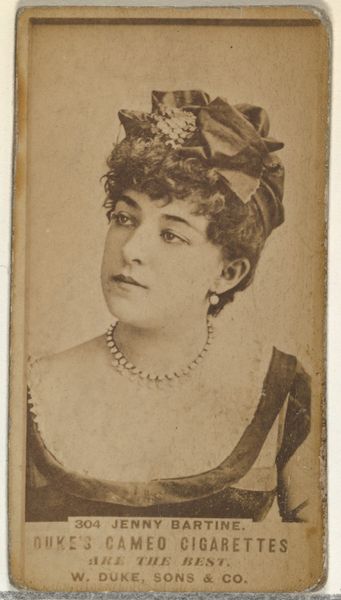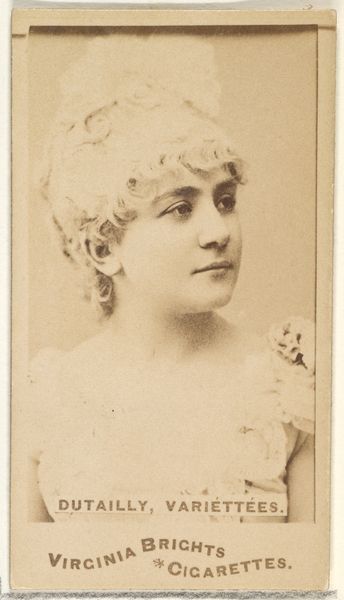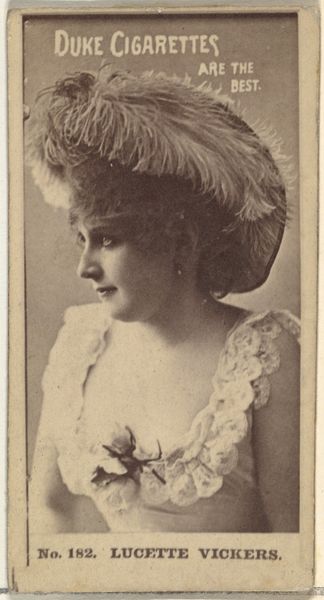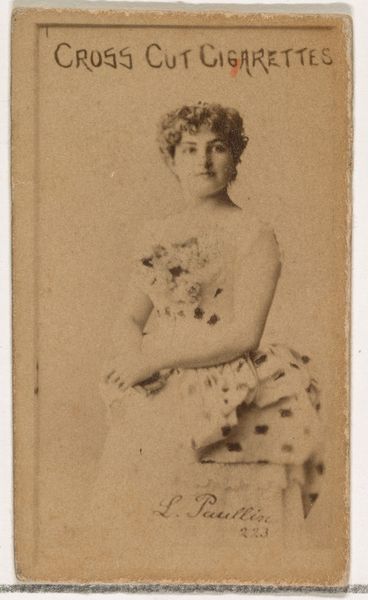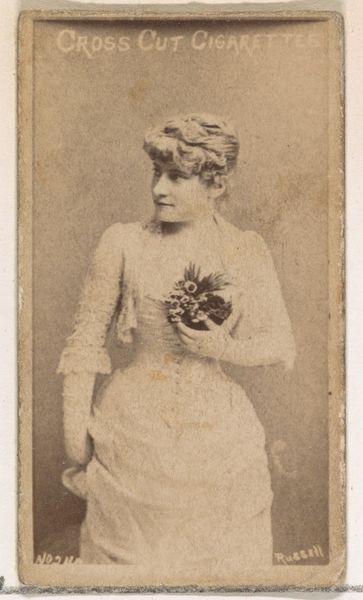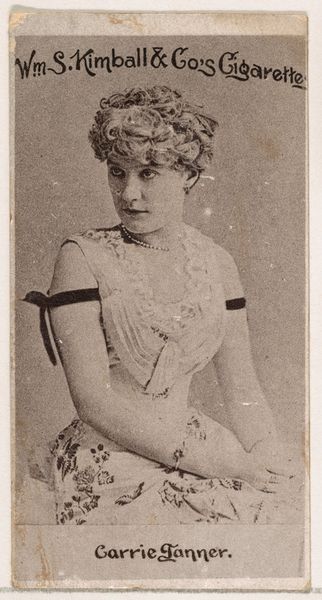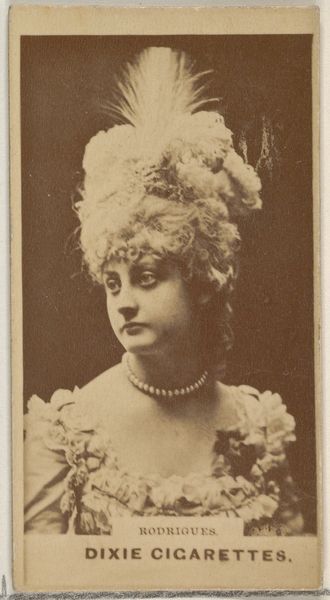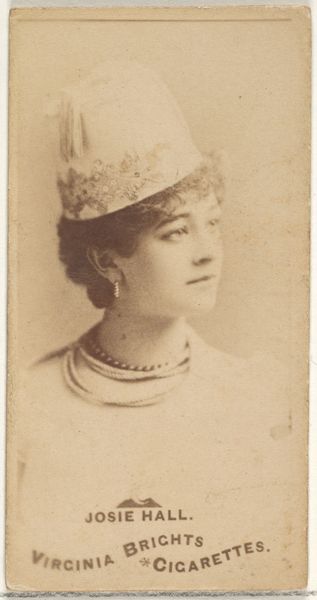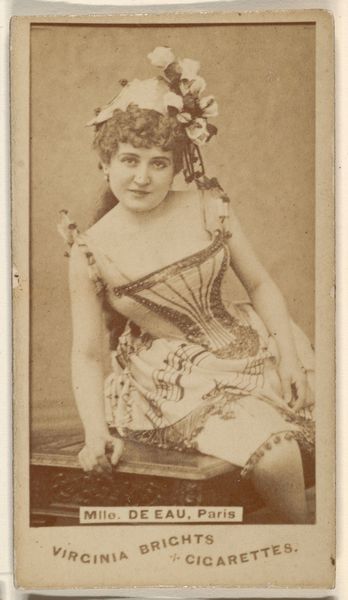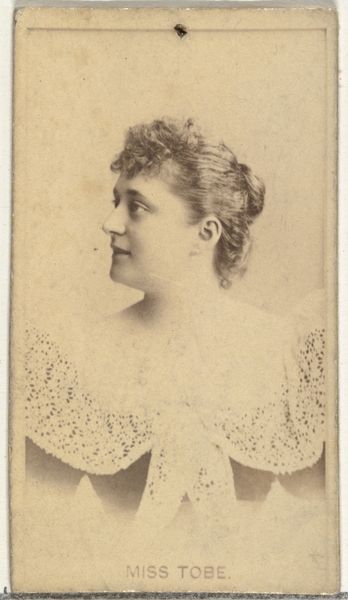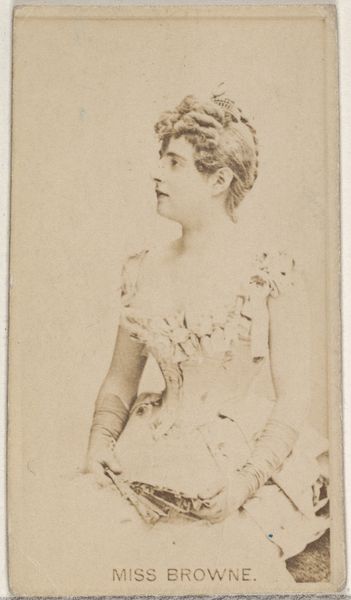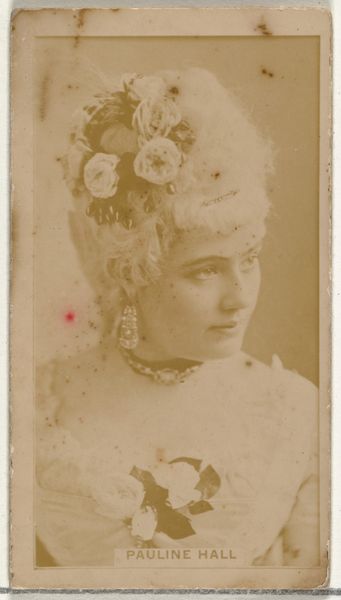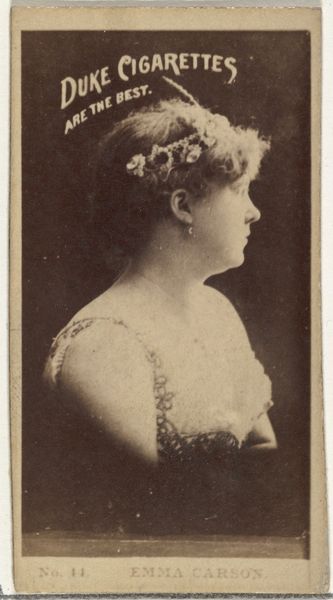
Card Number 567, Alma Stewart Stanley, from the Actors and Actresses series (N145-7) issued by Duke Sons & Co. to promote Duke Cigarettes 1880s
0:00
0:00
drawing, print, photography, albumen-print
#
portrait
#
drawing
# print
#
figuration
#
photography
#
coloured pencil
#
19th century
#
albumen-print
Dimensions: Sheet: 2 11/16 × 1 3/8 in. (6.8 × 3.5 cm)
Copyright: Public Domain
Editor: Here we have a portrait of Alma Stewart Stanley, created by W. Duke, Sons & Co. in the 1880s. It's a card, originally used to promote Duke Cigarettes, and made with albumen-print. It has an appealing vintage aesthetic and gives the impression of luxury because of the attire of the actress. What do you see when you look at it? Curator: Well, what immediately grabs me is not the *art* per se, but the means of its distribution: a cigarette card. It speaks volumes about the late 19th-century's burgeoning consumer culture and how even art became commodified. Think about the laborers involved in tobacco production, the printing processes for these cards – albumen-print photographs mass-produced and given away as a marketing ploy. This challenges our typical understanding of "high art". What sort of message do you think the production implies? Editor: That it makes art affordable? So almost…disposable, in a way? Something consumed like the cigarettes themselves, without a lot of consideration for its value? Curator: Exactly. The materiality of the object – a flimsy piece of card stock designed to be discarded with the cigarette packaging – reveals its true function. The artistry is secondary to its purpose as advertisement, inextricably linked to consumption and the economics of pleasure. And it served to create a need that never existed until then. This blurring of boundaries is important when discussing art, labor, materiality, and how social dynamics of power dictate these processes. Editor: That makes so much sense! So it is both a promotional product *and* a portrait, inextricably linked to consumerism. The actress may also have endorsed Duke Cigarettes? Curator: Precisely. Considering that Alma Stewart Stanley was, likely, hired for that promotional reason; do you believe there are social connotations involved? Editor: The commercial angle certainly reframes how I see it. I suppose it makes me think differently about art and labor, shifting from artistry to product. Thanks for pointing that out!
Comments
No comments
Be the first to comment and join the conversation on the ultimate creative platform.
